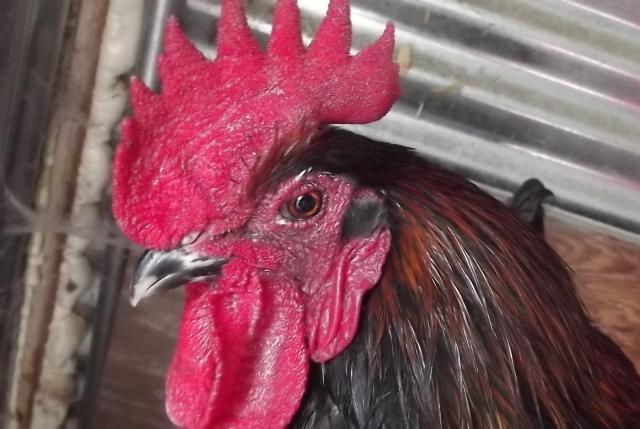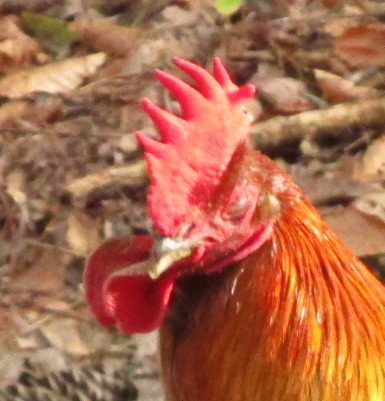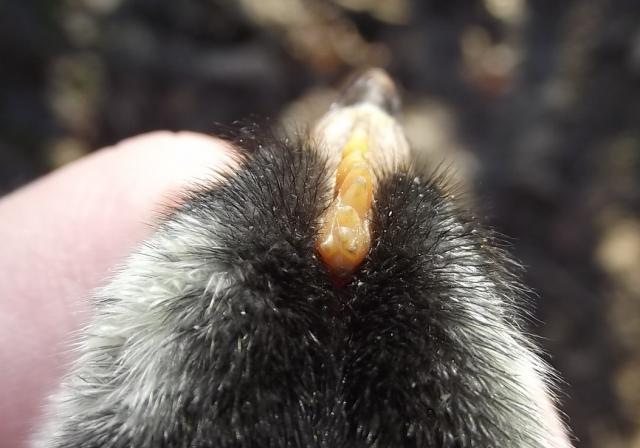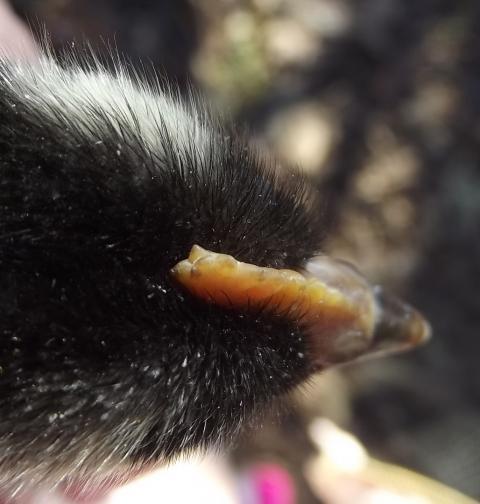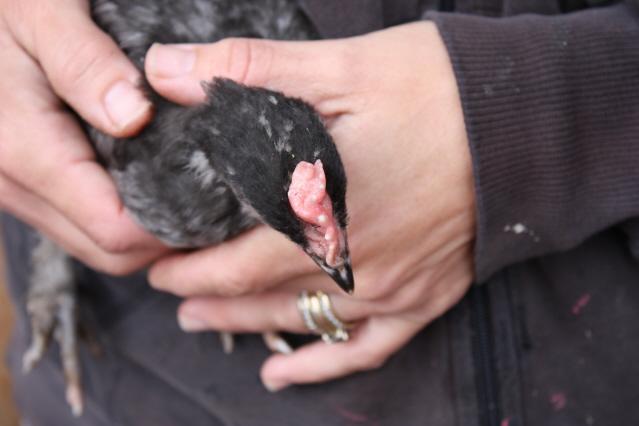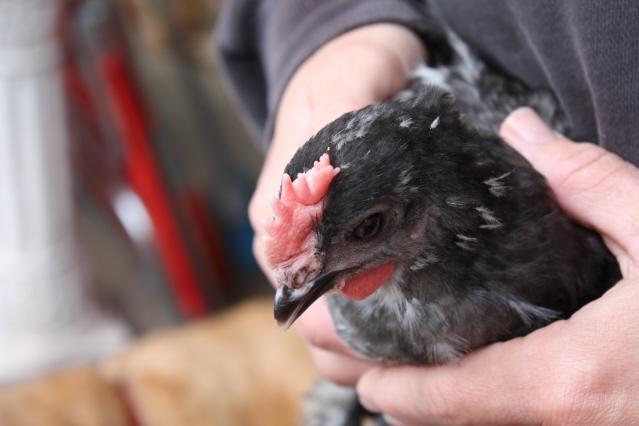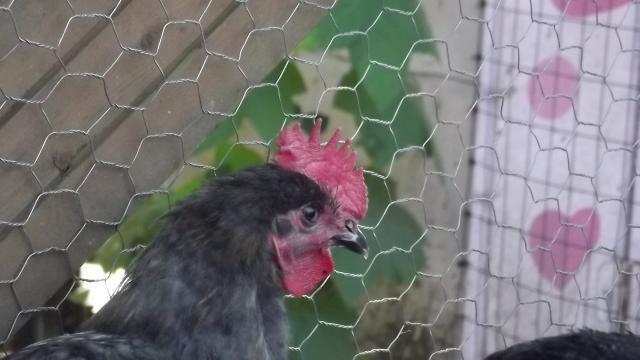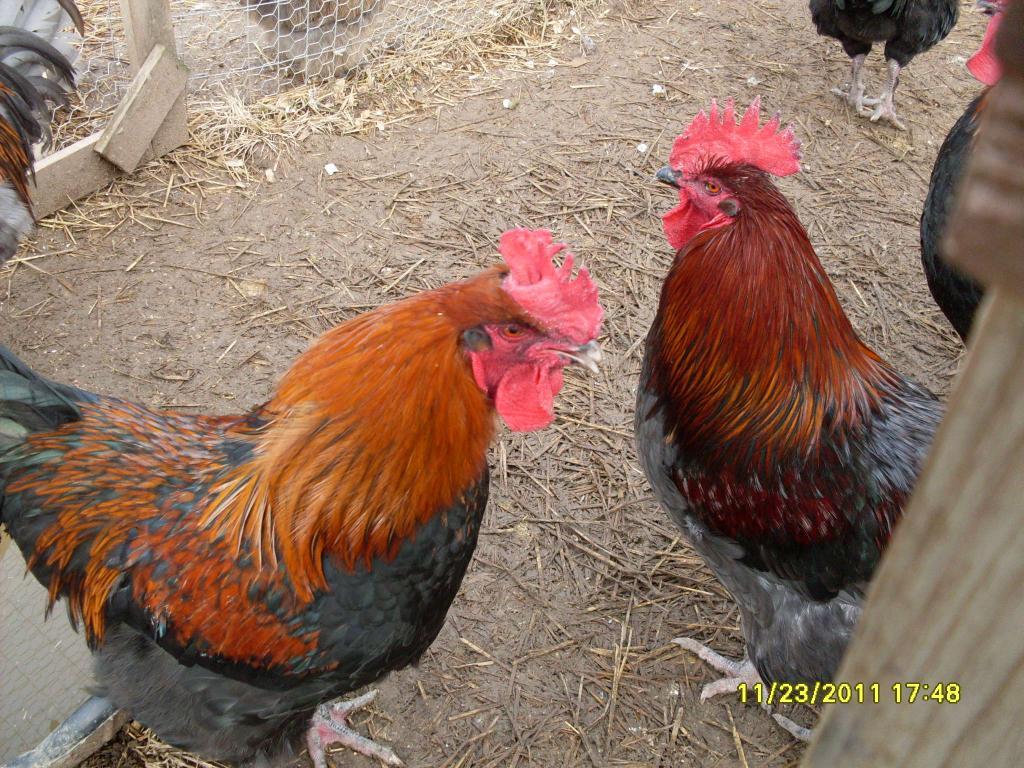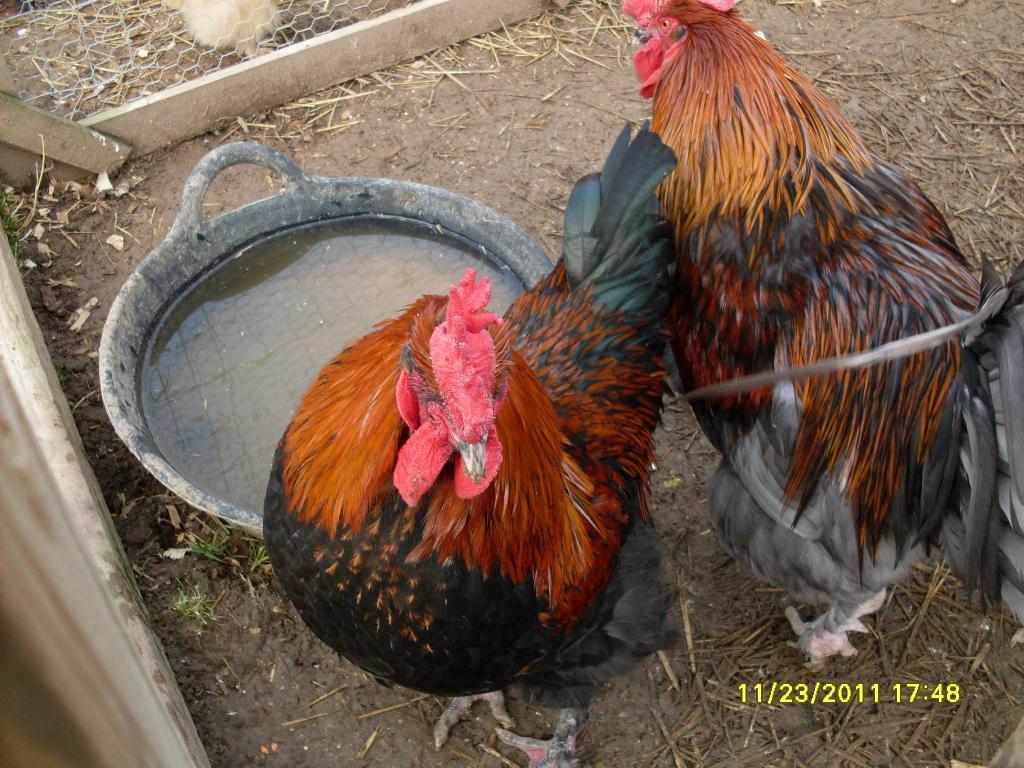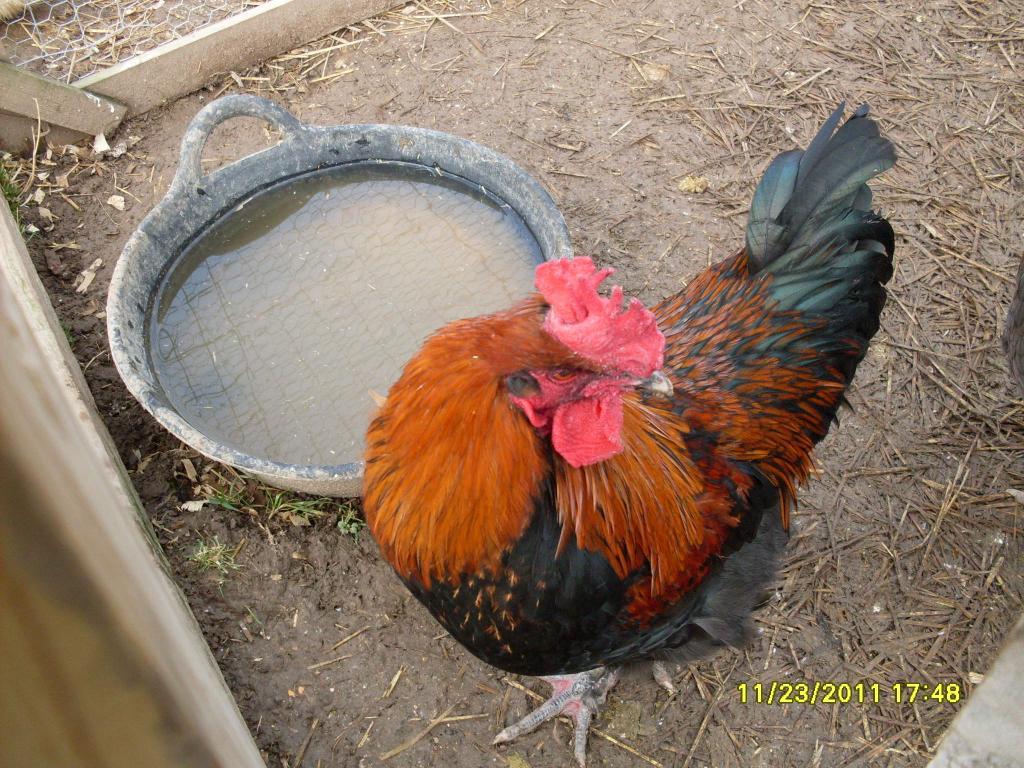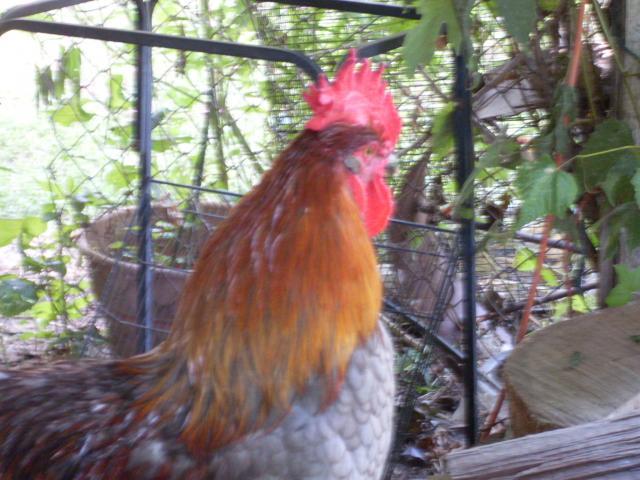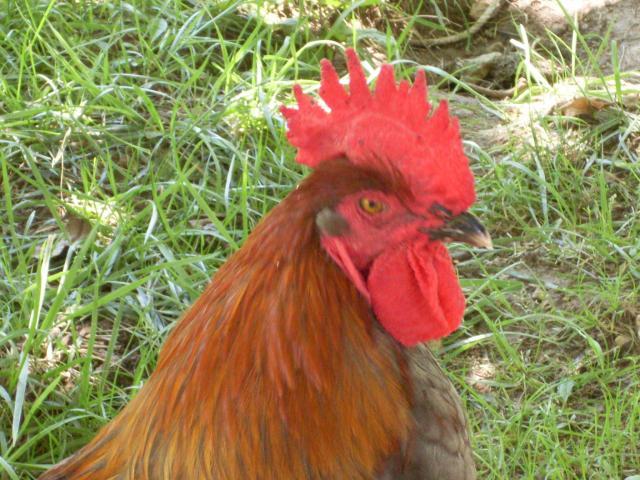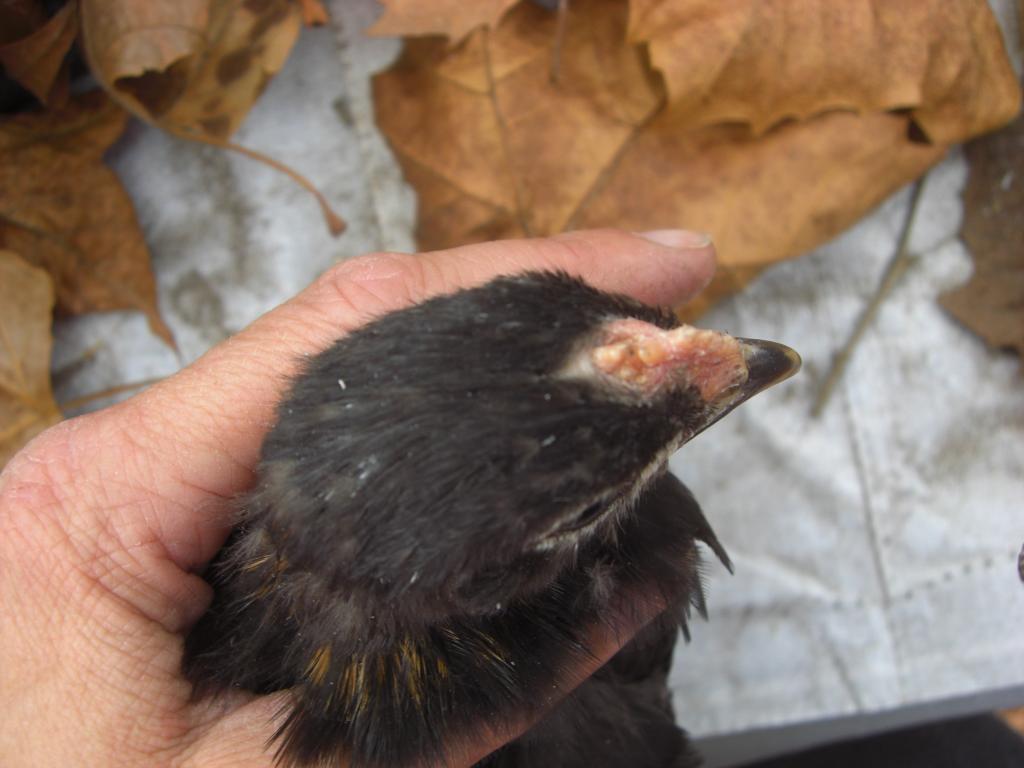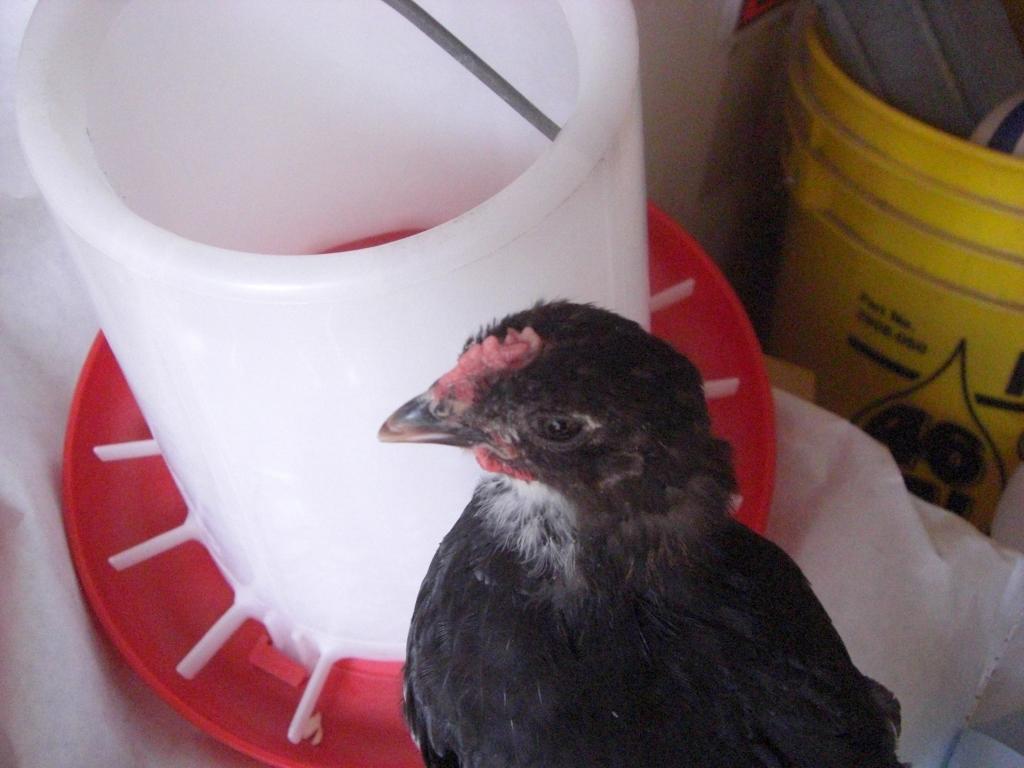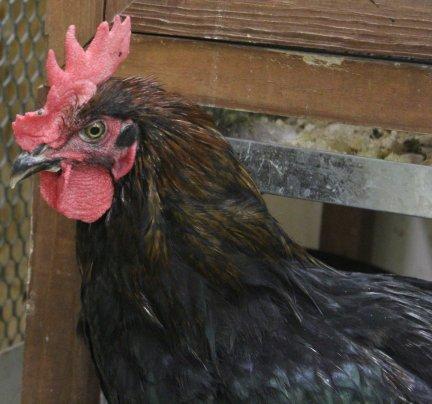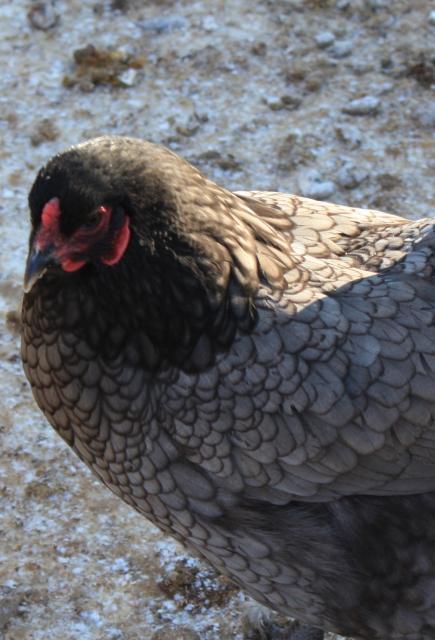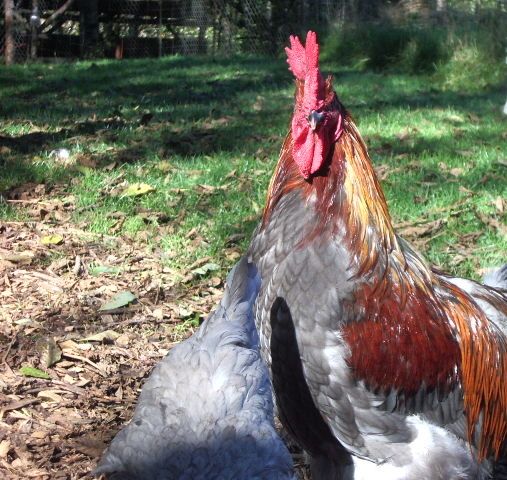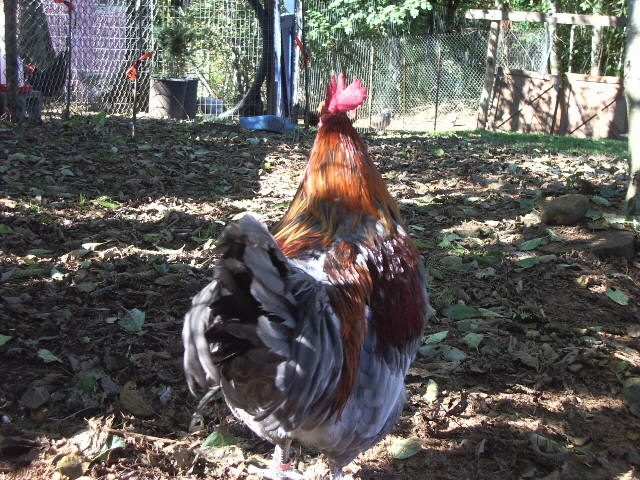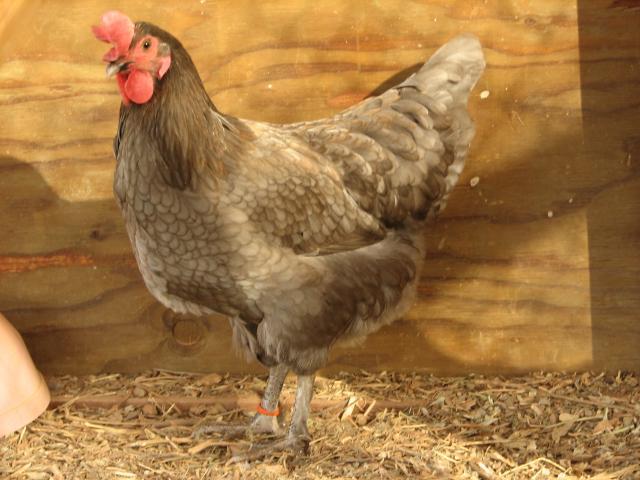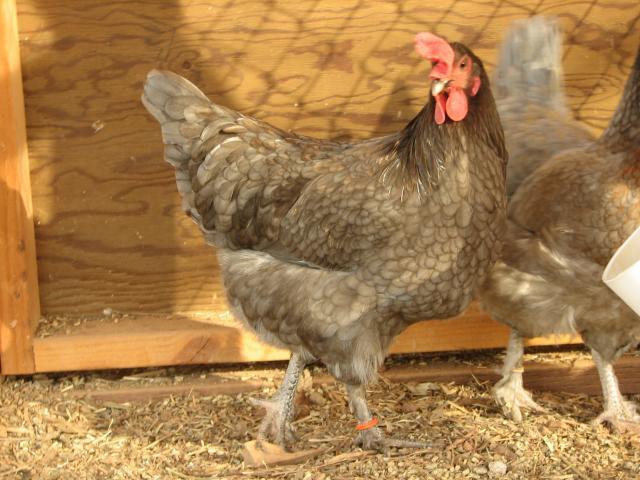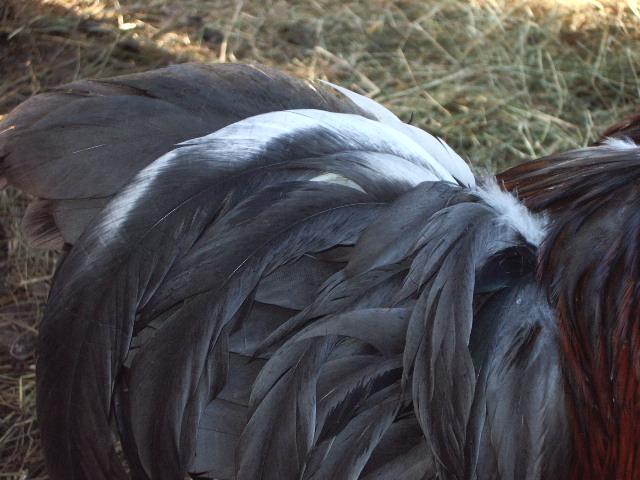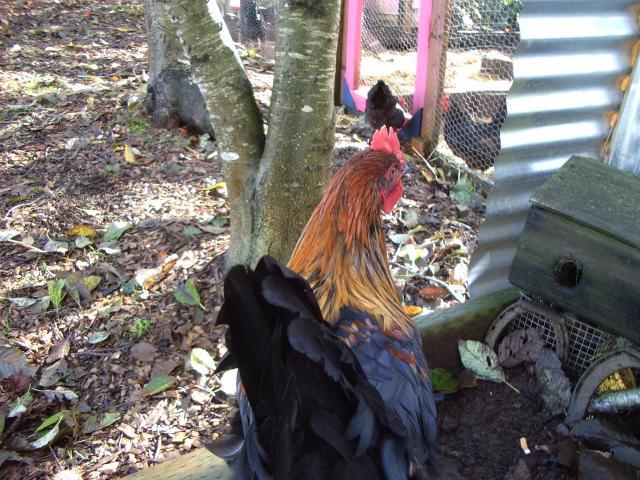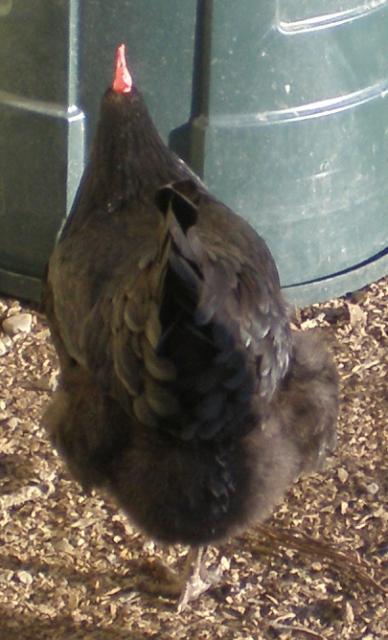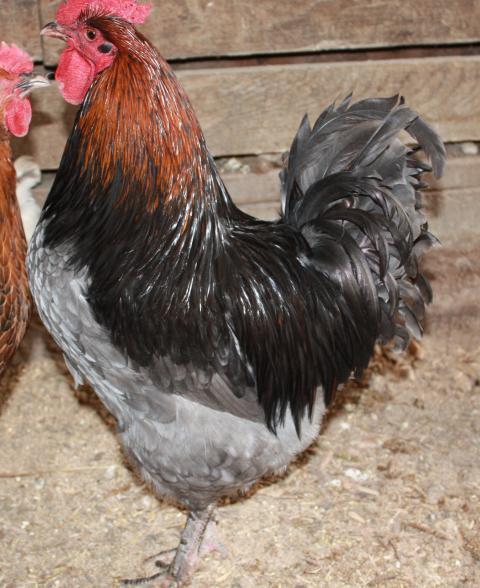This was posted by another BYC member in the marans thread that is almost 50 pages long.
I thought I would start a new thread dealing with the standard only - - - as a QUICK reference - - - for marans fans.
I am working my way through the marans - - chat - - thread - - -. As I find info pertaining to the proposed standards - - -I will copy it here.
I don't want to compete with the other thread - - - I just want to put together a quick reference for marans information.
I will keep updating it as new information comes along....
Currently, the SOP for marans missed the printing in the 2010 APA SOP book because the standard for marans ( as indicated below) was approved AFTER the 2010 book was published.
When the next book comes out with the complete and correct SOP for marans in it.... I will do no more updating to the standard.
I will not be including the standard for any other colors. This is only for the Black Copper Marans. I believe the standard for the wheaten marans was approved in 2011.
The next publishing of the APA SOP book should include at least the Black Copper and Wheaten marans. Maybe more colors will be approved between now and then.
THIS thread is not for chatting.... There is another thread called Marans - SOP discussion thread
https://www.backyardchickens.com/forum/viewtopic.php?id=517113&p=1
At the Marans - SOP discussion thread, you can post and get answers to your questions about the SOP.
MARANS - -
General Description (approved 7/26/10)
The Marans breed originated in France, in marshy areas close to the Atlantic coast. The breed is named after the historic port town of Marans. Evolution of the Marans type bird is said to have begun as early as the 13th century, with crosses between the local marsh hens and various gamecocks brought in to the port on ships. Gradual development of the breed then continued through the centuries, including the introduction of Brahma and Langshan blood during the late 1800s. Marans in their modern form first began appearing in French poultry shows in 1914. The Marans Club of France was organized in 1929, and that club established the first standard for Marans in 1931.
Marans have been imported to the USA in small numbers for many years now, probably beginning around the time that soldiers returned to the States after World War II. Over the years, birds and eggs have been brought in not only from France but also from countries such as England, Canada, Australia, and possibly Belgium and Switzerland. Importations of "English type" clean-legged Marans have led to the establishment of many clean-legged flocks in this country, especially in the cuckoo variety; nonetheless, the American standard adheres to the French standard calling for lightly feathered shanks and toes.
Marans are best known for their large, russet brown eggs. This is a defining characteristic of the Marans breed, so selection for egg color and size should never be neglected. Physically the Marans is a medium-sized bird with the character of a rustic farm hen, giving an impression of solidity and strength without being coarse. The legs are lightly feathered, but leg feathering should never be excessively heavy. Eye color is bright and clear in all varieties, never darkening into brown nor paling into yellow or pearl.
Economic Qualities (approved 7/26/10)
The Marans is a general purpose fowl for production of both meat and eggs. The breed is most famous for its large, dark chocolate-russet eggs, but it is also known for the fine flavor of its meat. Color of skin, white; color of egg shells, very dark reddish brown.
Disqualifications (approved 7/26/10)
Yellow on shanks or toes. White ear lobes. Pearl or black eyes. Absence of feathers on shanks. (See General Disqualifications and Cutting for Defects.)
Standard Weights (approved 6/11/10)
Cock . ..8 lbs Hen 6 1/2 lbs
Cockerel .7lbs Pullet ..5 1/2 lbs
ShapeMale (approved 6/11/10)
COMB: Single, moderately large, straight, upright, evenly serrated with five points; the blade not touching the neck.
BEAK: Long, stout and well curved.
FACE: Smooth, skin fine and soft in texture.
EYES: Large and prominent.
WATTLES: Medium in size, oval, skin fine in texture.
EAR-LOBES: Average in size, long.
HEAD: Moderate in size, slightly flattened on top, and long.
NECK: Moderately long and full, arched. Hackle abundant, flowing well over the shoulders.
BACK: Wide at the shoulders, long, flat, slightly tilted to the rear. Slightly more inclined than that of the female.
Saddle feathers -- abundant, saddle large and slightly raised.
TAIL: Full, rather short, carried at an angle of 45 degrees above horizontal.
Main tail feathers -- broad and overlapping, shorter than average.
Sickles -- shorter than average.
WINGS: Short, held close to the body, carriage nearly horizontal.
Primaries and secondaries: broad and overlapping in natural order when wing is folded.
BREAST: Strong, broad, and full. Well rounded when viewed from both the front and side.
BODY AND FLUFF: Body -- deep, long and broad, especially through the shoulders which are carried high. Overall, rectangular in shape.
Fluff -- medium in length.
LEGS and TOES: Legs set well apart and straight when viewed from the front.
Lower thighs -- strong and well feathered.
Shanks -- medium length, stout, and straight; lightly feathered down the outer sides.
Toes -- four long and well-separated toes on each foot. Outer toes lightly feathered, middle toes free from feathers.
PLUMAGE: Moderately tight and smooth textured.
ShapeFemale (approved 7/09/10)
COMB: Single, smaller than that of the male; straight and upright, evenly serrated with five points, and fine in texture. No female in or near production with the rear portion of the comb lopped should be discriminated against.
BEAK: Long, stout and well curved.
FACE: Smooth, skin fine and soft in texture.
EYES: Large and prominent.
WATTLES: Medium in size, oval.
EAR-LOBES: Average in size, long.
HEAD: Moderate in size, slightly flattened on top, and long.
BACK: Wide at the shoulders, long, flat, and slightly tilted to the rear. Slightly less inclined that that of the male.
NECK: Moderately long and full, arched.
TAIL: Full, rather short, carried at an angle of 45 degrees above horizontal.
Main tail feathers -- broad and overlapping, shorter than average.
WINGS: Short, held close to the body, carriage nearly horizontal.
Primaries and secondaries: broad and overlapping in natural order when wing is folded.
BREAST: Strong, broad, and full. Well rounded when viewed from both the front and side.
BODY AND FLUFF: Body -- deep, long and broad, especially through the shoulders which are carried high. Should be more rounded than the male.
Fluff -- medium in length.
LEGS AND TOES: Legs set well apart, straight when viewed from the front.
Lower Thighs -- strong and well feathered.
Shanks -- medium length, stout, and straight; lightly feathered down the outer sides.
Toes -- four long and well-separated toes on each foot. Outer toes lightly feathered, middle toes free from feathers..
PLUMAGE: Moderately tight and smooth textured.
I thought I would start a new thread dealing with the standard only - - - as a QUICK reference - - - for marans fans.
I am working my way through the marans - - chat - - thread - - -. As I find info pertaining to the proposed standards - - -I will copy it here.
I don't want to compete with the other thread - - - I just want to put together a quick reference for marans information.
I will keep updating it as new information comes along....
Currently, the SOP for marans missed the printing in the 2010 APA SOP book because the standard for marans ( as indicated below) was approved AFTER the 2010 book was published.
When the next book comes out with the complete and correct SOP for marans in it.... I will do no more updating to the standard.
I will not be including the standard for any other colors. This is only for the Black Copper Marans. I believe the standard for the wheaten marans was approved in 2011.
The next publishing of the APA SOP book should include at least the Black Copper and Wheaten marans. Maybe more colors will be approved between now and then.
THIS thread is not for chatting.... There is another thread called Marans - SOP discussion thread
https://www.backyardchickens.com/forum/viewtopic.php?id=517113&p=1
At the Marans - SOP discussion thread, you can post and get answers to your questions about the SOP.
MARANS - -
General Description (approved 7/26/10)
The Marans breed originated in France, in marshy areas close to the Atlantic coast. The breed is named after the historic port town of Marans. Evolution of the Marans type bird is said to have begun as early as the 13th century, with crosses between the local marsh hens and various gamecocks brought in to the port on ships. Gradual development of the breed then continued through the centuries, including the introduction of Brahma and Langshan blood during the late 1800s. Marans in their modern form first began appearing in French poultry shows in 1914. The Marans Club of France was organized in 1929, and that club established the first standard for Marans in 1931.
Marans have been imported to the USA in small numbers for many years now, probably beginning around the time that soldiers returned to the States after World War II. Over the years, birds and eggs have been brought in not only from France but also from countries such as England, Canada, Australia, and possibly Belgium and Switzerland. Importations of "English type" clean-legged Marans have led to the establishment of many clean-legged flocks in this country, especially in the cuckoo variety; nonetheless, the American standard adheres to the French standard calling for lightly feathered shanks and toes.
Marans are best known for their large, russet brown eggs. This is a defining characteristic of the Marans breed, so selection for egg color and size should never be neglected. Physically the Marans is a medium-sized bird with the character of a rustic farm hen, giving an impression of solidity and strength without being coarse. The legs are lightly feathered, but leg feathering should never be excessively heavy. Eye color is bright and clear in all varieties, never darkening into brown nor paling into yellow or pearl.
Economic Qualities (approved 7/26/10)
The Marans is a general purpose fowl for production of both meat and eggs. The breed is most famous for its large, dark chocolate-russet eggs, but it is also known for the fine flavor of its meat. Color of skin, white; color of egg shells, very dark reddish brown.
Disqualifications (approved 7/26/10)
Yellow on shanks or toes. White ear lobes. Pearl or black eyes. Absence of feathers on shanks. (See General Disqualifications and Cutting for Defects.)
Standard Weights (approved 6/11/10)
Cock . ..8 lbs Hen 6 1/2 lbs
Cockerel .7lbs Pullet ..5 1/2 lbs
ShapeMale (approved 6/11/10)
COMB: Single, moderately large, straight, upright, evenly serrated with five points; the blade not touching the neck.
BEAK: Long, stout and well curved.
FACE: Smooth, skin fine and soft in texture.
EYES: Large and prominent.
WATTLES: Medium in size, oval, skin fine in texture.
EAR-LOBES: Average in size, long.
HEAD: Moderate in size, slightly flattened on top, and long.
NECK: Moderately long and full, arched. Hackle abundant, flowing well over the shoulders.
BACK: Wide at the shoulders, long, flat, slightly tilted to the rear. Slightly more inclined than that of the female.
Saddle feathers -- abundant, saddle large and slightly raised.
TAIL: Full, rather short, carried at an angle of 45 degrees above horizontal.
Main tail feathers -- broad and overlapping, shorter than average.
Sickles -- shorter than average.
WINGS: Short, held close to the body, carriage nearly horizontal.
Primaries and secondaries: broad and overlapping in natural order when wing is folded.
BREAST: Strong, broad, and full. Well rounded when viewed from both the front and side.
BODY AND FLUFF: Body -- deep, long and broad, especially through the shoulders which are carried high. Overall, rectangular in shape.
Fluff -- medium in length.
LEGS and TOES: Legs set well apart and straight when viewed from the front.
Lower thighs -- strong and well feathered.
Shanks -- medium length, stout, and straight; lightly feathered down the outer sides.
Toes -- four long and well-separated toes on each foot. Outer toes lightly feathered, middle toes free from feathers.
PLUMAGE: Moderately tight and smooth textured.
ShapeFemale (approved 7/09/10)
COMB: Single, smaller than that of the male; straight and upright, evenly serrated with five points, and fine in texture. No female in or near production with the rear portion of the comb lopped should be discriminated against.
BEAK: Long, stout and well curved.
FACE: Smooth, skin fine and soft in texture.
EYES: Large and prominent.
WATTLES: Medium in size, oval.
EAR-LOBES: Average in size, long.
HEAD: Moderate in size, slightly flattened on top, and long.
BACK: Wide at the shoulders, long, flat, and slightly tilted to the rear. Slightly less inclined that that of the male.
NECK: Moderately long and full, arched.
TAIL: Full, rather short, carried at an angle of 45 degrees above horizontal.
Main tail feathers -- broad and overlapping, shorter than average.
WINGS: Short, held close to the body, carriage nearly horizontal.
Primaries and secondaries: broad and overlapping in natural order when wing is folded.
BREAST: Strong, broad, and full. Well rounded when viewed from both the front and side.
BODY AND FLUFF: Body -- deep, long and broad, especially through the shoulders which are carried high. Should be more rounded than the male.
Fluff -- medium in length.
LEGS AND TOES: Legs set well apart, straight when viewed from the front.
Lower Thighs -- strong and well feathered.
Shanks -- medium length, stout, and straight; lightly feathered down the outer sides.
Toes -- four long and well-separated toes on each foot. Outer toes lightly feathered, middle toes free from feathers..
PLUMAGE: Moderately tight and smooth textured.
Last edited:



